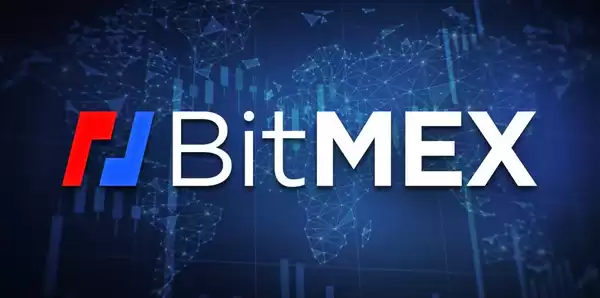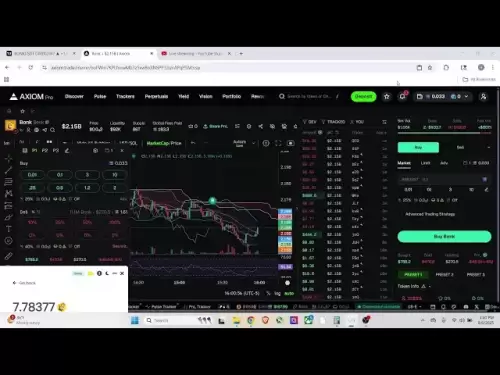-
 Bitcoin
Bitcoin $115100
1.27% -
 Ethereum
Ethereum $3675
2.71% -
 XRP
XRP $2.995
1.45% -
 Tether USDt
Tether USDt $1.000
0.02% -
 BNB
BNB $769.8
2.64% -
 Solana
Solana $168.0
3.25% -
 USDC
USDC $0.9999
-0.01% -
 TRON
TRON $0.3371
1.48% -
 Dogecoin
Dogecoin $0.2051
3.36% -
 Cardano
Cardano $0.7394
2.30% -
 Hyperliquid
Hyperliquid $38.15
0.42% -
 Stellar
Stellar $0.3966
-0.36% -
 Sui
Sui $3.486
2.93% -
 Chainlink
Chainlink $16.72
2.52% -
 Bitcoin Cash
Bitcoin Cash $568.0
4.36% -
 Hedera
Hedera $0.2440
2.59% -
 Ethena USDe
Ethena USDe $1.001
0.04% -
 Avalanche
Avalanche $22.16
2.06% -
 Litecoin
Litecoin $119.1
-0.73% -
 UNUS SED LEO
UNUS SED LEO $8.991
0.04% -
 Toncoin
Toncoin $3.232
-0.39% -
 Shiba Inu
Shiba Inu $0.00001233
2.82% -
 Uniswap
Uniswap $9.717
2.53% -
 Polkadot
Polkadot $3.664
1.85% -
 Dai
Dai $1.000
0.01% -
 Monero
Monero $281.2
-3.89% -
 Bitget Token
Bitget Token $4.350
1.55% -
 Cronos
Cronos $0.1428
5.07% -
 Pepe
Pepe $0.00001050
3.68% -
 Aave
Aave $262.3
3.54%
BitMEX contract long-short ratio
The BitMEX contract long-short ratio, indicating the relative number of long and short positions, serves as a valuable tool for assessing market sentiment and identifying potential trading opportunities, but it should be used alongside other technical analysis tools and with consideration for market conditions, trader sentiment, and time frame.
Nov 11, 2024 at 07:26 am

BitMEX Contract Long-Short Ratio: A Comprehensive Guide
The BitMEX contract long-short ratio is a valuable metric that traders can use to gauge market sentiment and identify potential trading opportunities. This ratio measures the relative number of long and short positions held by traders on the BitMEX platform. A high ratio indicates that a majority of traders are bullish on a particular asset, while a low ratio suggests that traders are bearish.
Key Considerations
Before using the BitMEX contract long-short ratio, it is important to consider the following key factors:
- Market conditions: The ratio can be influenced by market conditions such as volatility, news events, and price movements.
- Trader sentiment: The ratio reflects the sentiment of traders on the BitMEX platform, which may not necessarily represent the overall market sentiment.
- Time frame: The ratio can vary significantly over different time frames. It is important to consider the time frame when interpreting the results.
How to Calculate the Long-Short Ratio
The BitMEX contract long-short ratio is calculated using the following formula:
Long-short ratio = (Total number of long contracts / Total number of short contracts) * 100Interpreting the Long-Short Ratio
- Ratio above 100: Indicates that there are more long contracts than short contracts. This suggests that traders are bullish on the asset.
- Ratio below 100: Indicates that there are more short contracts than long contracts. This suggests that traders are bearish on the asset.
- Ratio close to 100: Indicates that there is a relatively equal number of long and short contracts. This suggests that traders are neutral on the asset.
Using the Long-Short Ratio for Trading
The BitMEX contract long-short ratio can be used in conjunction with other technical analysis tools to identify potential trading opportunities. Here are some guidelines:
- Trend trading: A rising long-short ratio in an uptrend can indicate a continuation of the uptrend. Conversely, a falling long-short ratio in a downtrend can indicate a continuation of the downtrend.
- Reversal trading: A sharp change in the long-short ratio, particularly from extreme levels, can indicate a potential reversal in the market trend.
- Confirmation: The long-short ratio can be used to confirm other trading indicators, such as price action and moving averages.
Step-by-Step Guide to Using the BitMEX Contract Long-Short Ratio
- Choose a trading platform: The BitMEX contract long-short ratio is available on various trading platforms that support BitMEX futures contracts.
- Select the desired asset: The long-short ratio can be calculated for different crypto assets, such as Bitcoin, Ethereum, and Litecoin.
- Determine the time frame: The ratio can be calculated for different time frames, such as daily, weekly, or monthly.
- Calculate the long-short ratio: Use the formula provided earlier to calculate the long-short ratio for the chosen asset and time frame.
- Interpret the results: Based on the long-short ratio, assess the market sentiment and identify potential trading opportunities.
- Use in conjunction with other tools: Combine the long-short ratio with other technical analysis tools for a more comprehensive market analysis.
- Monitor the ratio over time: The long-short ratio can change rapidly, so it is important to monitor the ratio over time to stay updated with market sentiment.
- Consider risk management: Remember that market sentiment can change quickly, so always incorporate risk management strategies into your trading.
Disclaimer:info@kdj.com
The information provided is not trading advice. kdj.com does not assume any responsibility for any investments made based on the information provided in this article. Cryptocurrencies are highly volatile and it is highly recommended that you invest with caution after thorough research!
If you believe that the content used on this website infringes your copyright, please contact us immediately (info@kdj.com) and we will delete it promptly.
- BlockDAG, Litecoin, and Cardano: Charting the Course in Crypto's Dynamic Waters
- 2025-08-07 09:09:06
- Fireverse Token: Igniting a Musical Revolution in Web3
- 2025-08-07 08:27:45
- Ethereum, L2 Withdrawals, and Decentralization: A New Yorker's Take
- 2025-08-07 08:32:33
- Avalanche vs. Ruvi AI: Daily Sales Tell a Story of Crypto Disruption
- 2025-08-07 06:29:35
- DeSoc: The Crypto to Buy Now for a Decentralized Future (and Maybe 43x Gains!)
- 2025-08-07 06:50:16
- Arctic Pablo Coin: Riding the Meme Coin Wave with a Deflationary Twist
- 2025-08-07 07:18:13
Related knowledge

Why is my Bitstamp futures position being liquidated?
Jul 23,2025 at 11:08am
Understanding Futures Liquidation on BitstampFutures trading on Bitstamp involves borrowing funds to open leveraged positions, which amplifies both po...

How to report Bitstamp futures for taxes?
Jul 30,2025 at 08:35am
Understanding Bitstamp Futures and Taxable EventsWhen trading Bitstamp futures, it’s essential to recognize that these financial instruments are treat...

Does Bitstamp offer inverse contracts?
Jul 23,2025 at 01:28pm
Understanding Inverse Contracts in Cryptocurrency TradingIn the realm of cryptocurrency derivatives, inverse contracts are a specific type of futures ...

What is the difference between futures and perpetuals on Bitstamp?
Jul 27,2025 at 05:08am
Understanding Futures Contracts on BitstampFutures contracts on Bitstamp are financial derivatives that allow traders to speculate on the future price...

How to find your Bitstamp futures trade history?
Jul 23,2025 at 08:07am
Understanding Bitstamp and Futures Trading AvailabilityAs of the current state of Bitstamp’s service offerings, it is critical to clarify that Bitstam...

Can I use a trailing stop on Bitstamp futures?
Jul 23,2025 at 01:42pm
Understanding Trailing Stops in Cryptocurrency TradingA trailing stop is a dynamic type of stop-loss order that adjusts automatically as the price of ...

Why is my Bitstamp futures position being liquidated?
Jul 23,2025 at 11:08am
Understanding Futures Liquidation on BitstampFutures trading on Bitstamp involves borrowing funds to open leveraged positions, which amplifies both po...

How to report Bitstamp futures for taxes?
Jul 30,2025 at 08:35am
Understanding Bitstamp Futures and Taxable EventsWhen trading Bitstamp futures, it’s essential to recognize that these financial instruments are treat...

Does Bitstamp offer inverse contracts?
Jul 23,2025 at 01:28pm
Understanding Inverse Contracts in Cryptocurrency TradingIn the realm of cryptocurrency derivatives, inverse contracts are a specific type of futures ...

What is the difference between futures and perpetuals on Bitstamp?
Jul 27,2025 at 05:08am
Understanding Futures Contracts on BitstampFutures contracts on Bitstamp are financial derivatives that allow traders to speculate on the future price...

How to find your Bitstamp futures trade history?
Jul 23,2025 at 08:07am
Understanding Bitstamp and Futures Trading AvailabilityAs of the current state of Bitstamp’s service offerings, it is critical to clarify that Bitstam...

Can I use a trailing stop on Bitstamp futures?
Jul 23,2025 at 01:42pm
Understanding Trailing Stops in Cryptocurrency TradingA trailing stop is a dynamic type of stop-loss order that adjusts automatically as the price of ...
See all articles

























































































